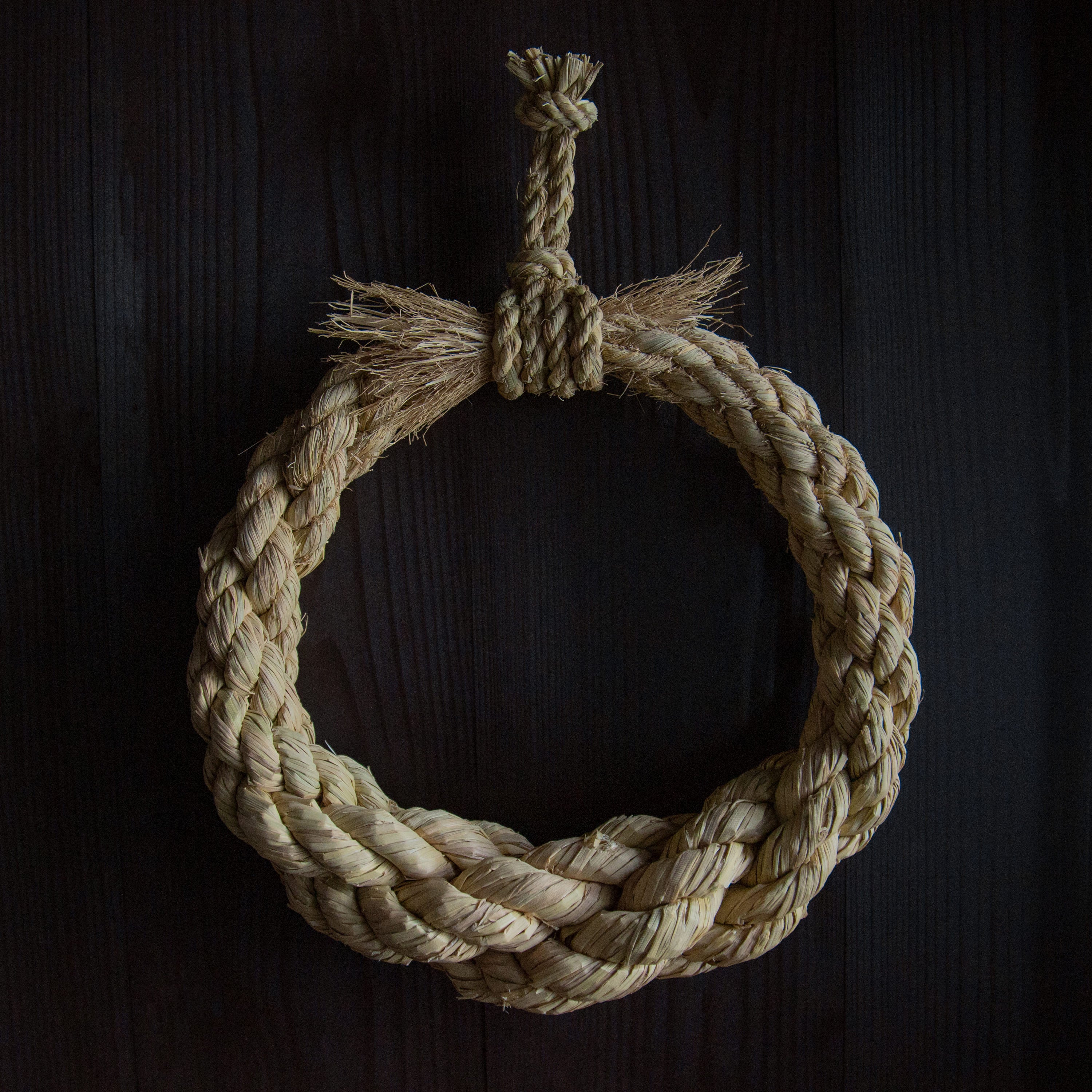

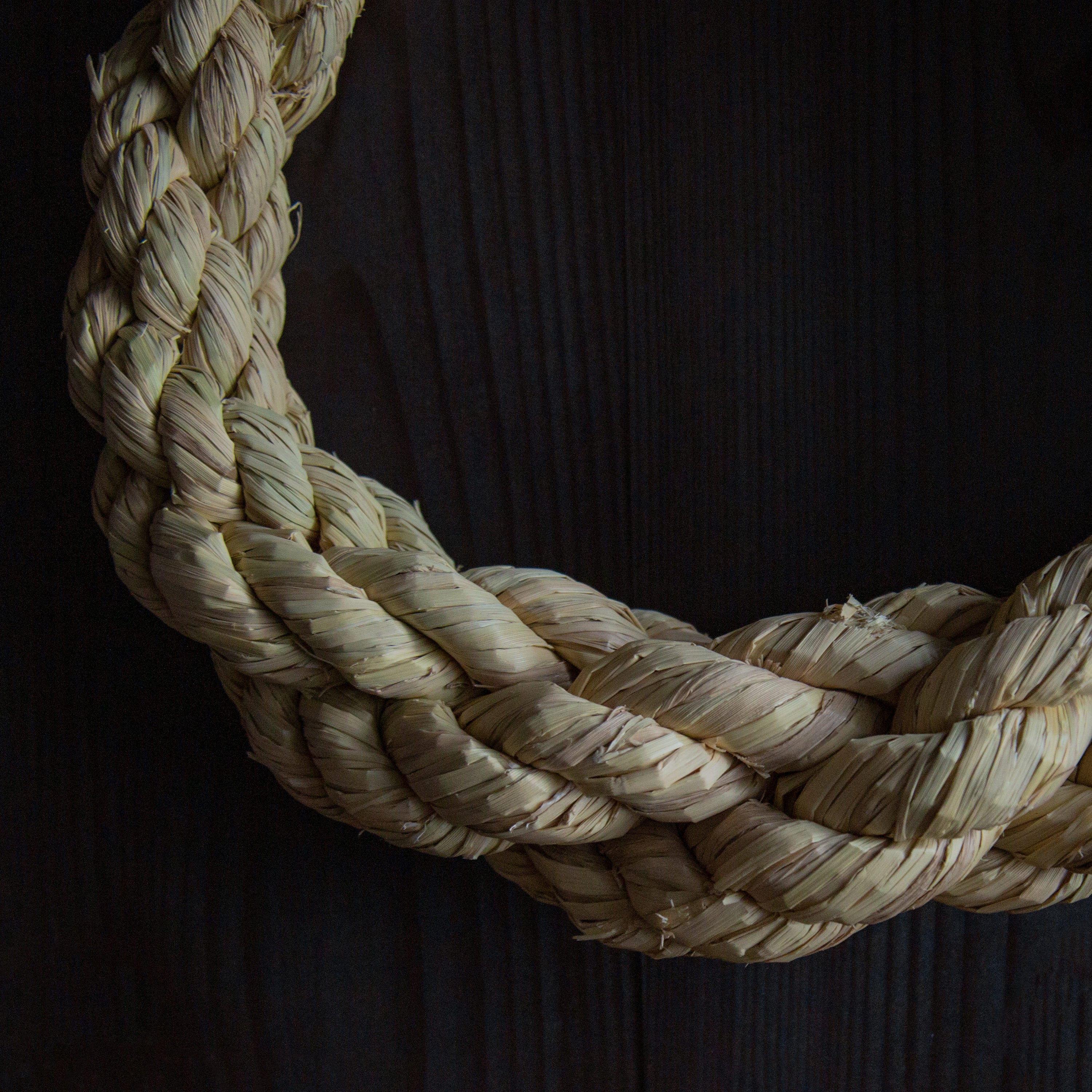
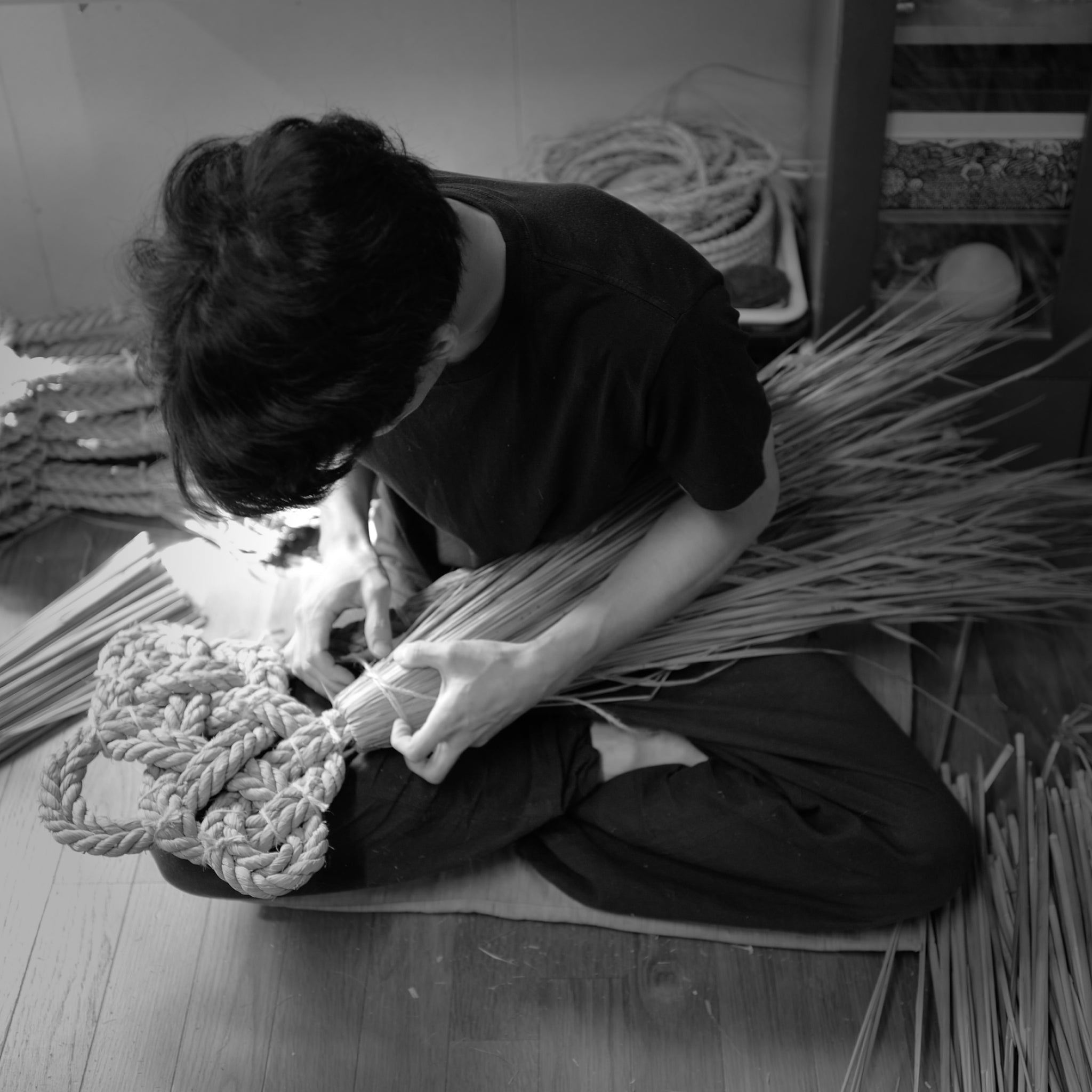
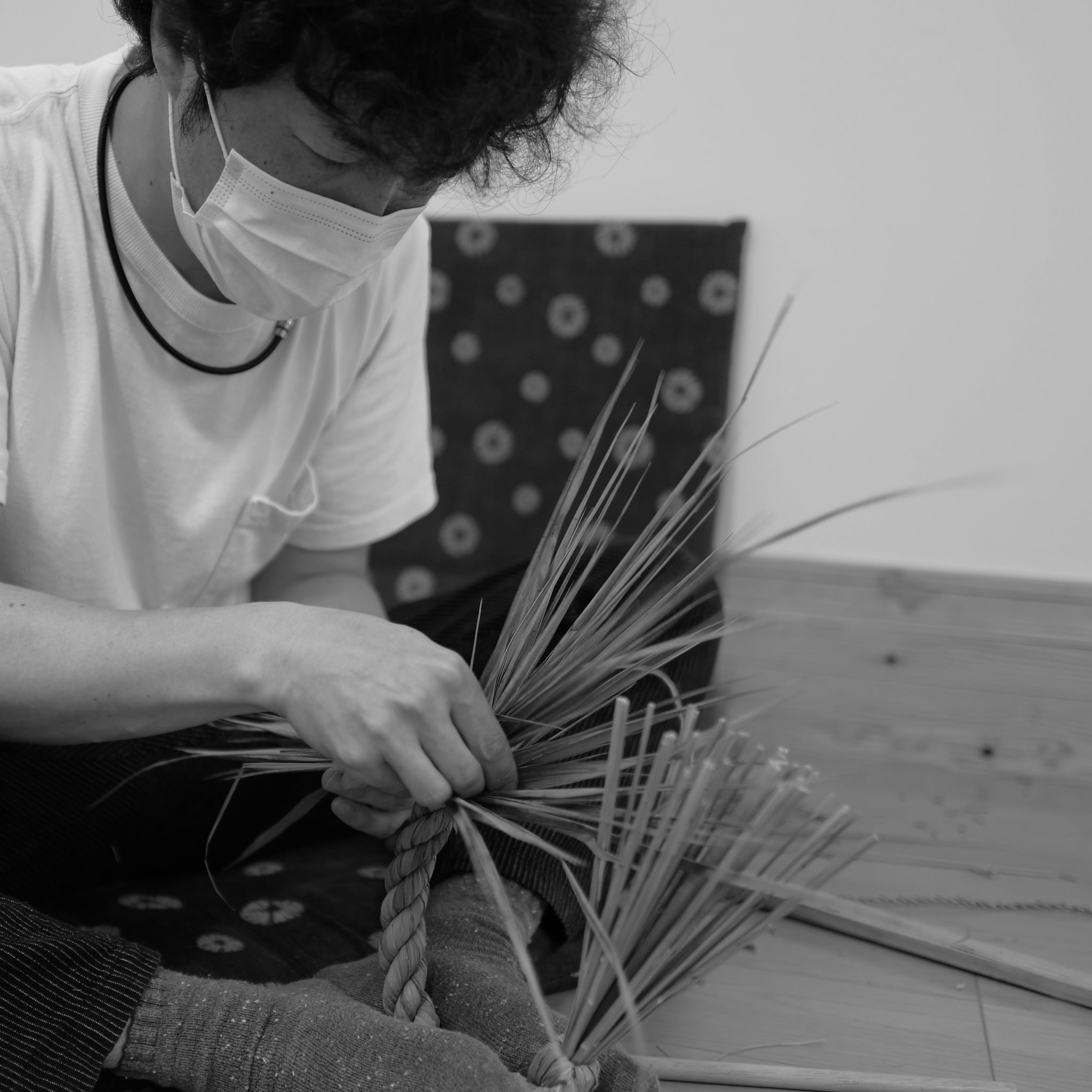
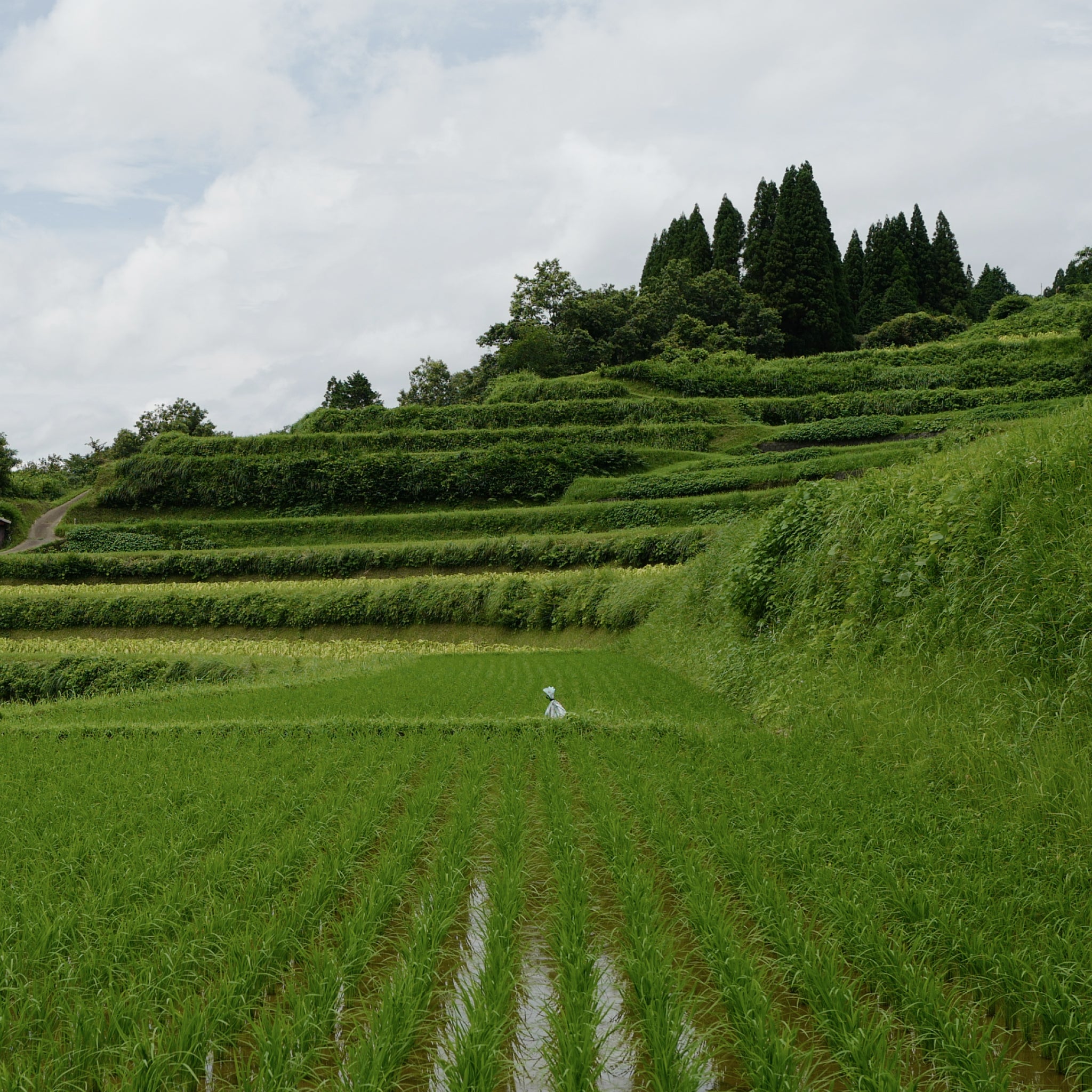
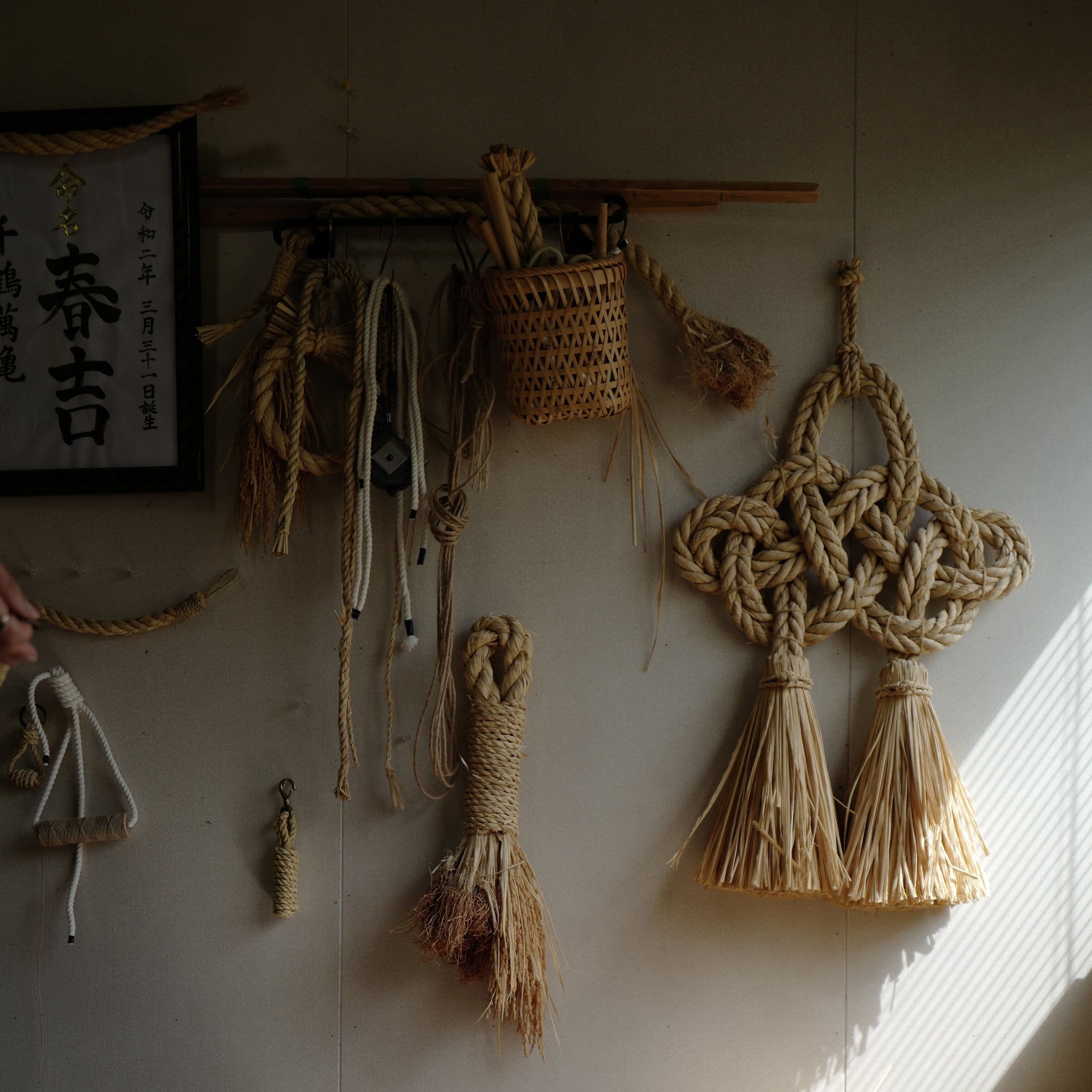
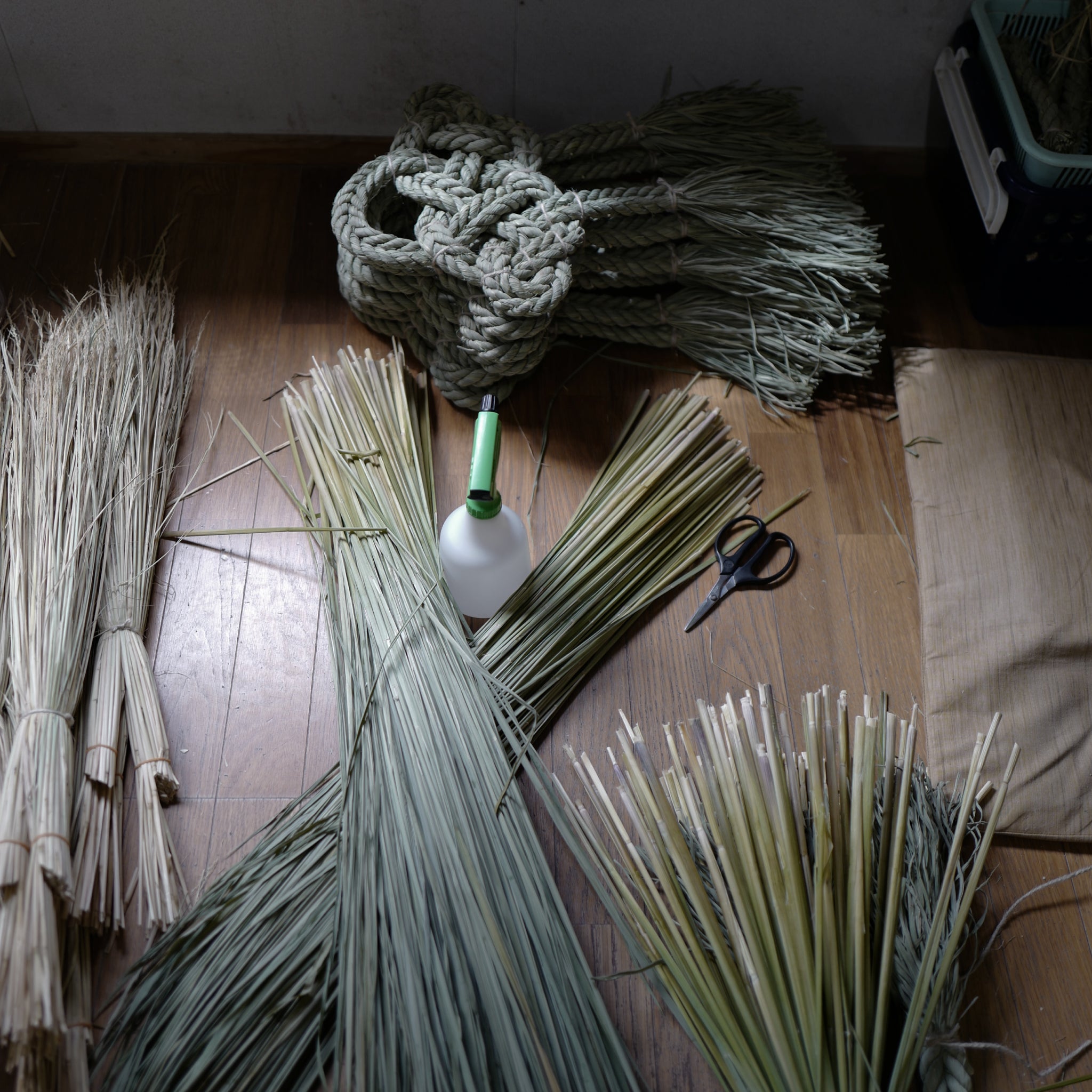
Warazaiku - Hōju
Warazaiku, a craft made of straw, was first mentioned in the genesis story of Japan compiled in 712. Tightly intertwined with agriculture and the Shinto religion, it was traditionally crafted by farmers with the byproduct of rice harvest. Made by coiling the straw between the palms of the craftspeople’s hands, prayers for good fortune are interwoven into the amulet.
They are handwoven by Warazaiku Takubo in Hinokage-cho, close to Takachiho region, where legends say that the grandson of the Shinto sun goddess and mythical ancestress of the Japanese imperial family, descended down with a sheaf of rice - in hopes that Japan is blessed with an abundance of rice.
Thankfully, with his hopes realized, Warazaiku became a craft prevalent amongst farmers to make everyday items, including sandals, food storage, and ornaments. But, with the current use of heavy machinery for rice harvest, the straws are cut too short to be used for this craft. Mr. Yoichiro Kai of Takubo is now preserving this declining art by spending three quarters of the year to prepare the straw - oftentimes facing challenges of the fluctuating and unstable climate of the region.
宝珠 (Hōju) - Translated to “ball of treasure,” this is an amulet for the prevention of misfortune and for your hopes and dreams to come true.

Takubo
- Generation: Third
- Material: Rice straw
- Dimensions: 43 x 31cm
- Wipe off dust on a regular basis.
- Since it’s a natural material made of straw, place in an area low in humidity and temperature to avoid growth of mold.
- If you find mold, leave it out in the sun and use a brush to remove the mold or wipe it off gently with a cloth sprayed with alcohol or vinegar.
- In case you find a bug in your amulet, place it in an oven at 50 degrees celsius (122F) for around 2 hours.
- As Warazaiku is made from fresh straw, it is natural for it to change colors from green to gold over the course of time.
Choose options









